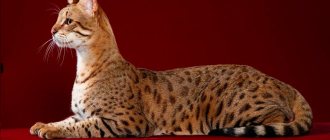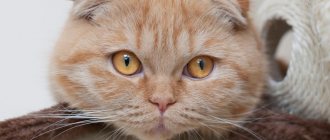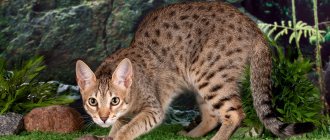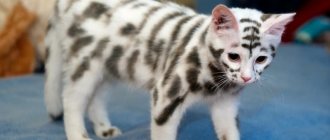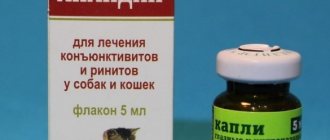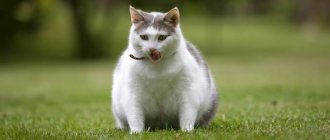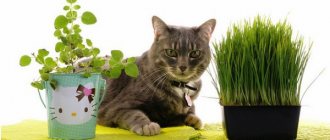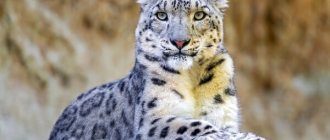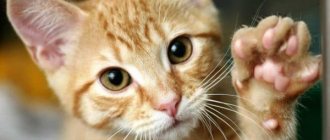A little cat history
Cats have been with humans for more than 9,000 years, as evidenced by archaeological research and ancient writings. And in those days, no one thought about whether a cat belonged to a particular breed. In Ancient Egypt, cats were revered as sacred animals and were also valued as excellent rodent hunters. In the Middle Ages, in some countries they were credited with magical properties and connections with evil spirits, in others they were considered special creatures that were a symbol of goodness and peace in the home.
The history of the mustachioed tabby is very rich, but it takes on new colors when cats began to be seriously bred, endowing them with special characteristics.
Since the end of the 19th century, active breeding work has been carried out, which gives birth to more and more new breeds of cats. This produces extraordinary mustaches with varying lengths of fur or even hairless ones, with amazing colors and interesting character traits. Each representative that is recognized by a felinological organization is unique and finds its fans. But with all the variety of purebred purrs, yard cats remain the most numerous and popular.
Brazilian shorthair cat
The ancestors of the Brazilian Shorthair are ordinary street cats originally from Brazil. For a long time, breeders did not take these animals seriously, considering them unpromising for breeding as a separate breed.
At the end of the twentieth century, it was found that Brazilian cats have a number of unique qualities: special elegant grace, unusual eye shape, high intelligence and good health.
The breed standard was formed by 1999. Given their origins, it is not surprising that Brazilian cats adopted the main features of their appearance from their domestic ancestors. Despite their popularity all over the world, some still mistake these purebred animals for ordinary mestizos from the street.
Is there a yard breed?
The very concept of “breed” is very young – it is no more than 200 years old. Felinological organizations identify special traits and properties in individual cats, then prescribe and approve a standard with these unique characteristics, thereby giving the world a new purebred beauty.
Felinologists call yard cats outbred, although this statement can be considered erroneous, because the ancestors of all purrs were wild cats, which have different external characteristics and character, which is explained by different climates and ability to adapt.
Thus, native breeds with characteristic external data and character traits can be called yard breeds, because the distinctive characteristics of these purrs were formed thanks to nature, without the “selective” hand of man.
These native barn cats include:
- Turkish Angora.
- Celtic cat.
- Persian cat.
- Siberian cat.
- Siamese cat.
Norwegian Forest Cat
Norwegian Forest is one of the oldest breeds. The Vikings created legends about the ancestors of these cats: it was believed that proud and strong cats accompanied the god Thor on his campaigns.
The descendants of northern cats were developed into a separate breed at the beginning of the twentieth century. Despite the existing standard, Norwegian Foresters are often mistaken for simple outbred animals.
This happens because of their “wild” appearance and variety of colors, the most common of which are gray, brown tabby and black and white, which are not very typical for cats of noble blood.
These are proud and capricious cats with extraordinary intelligence and good health. It is best to keep them in a spacious house with a plot, so that the animal always has the opportunity to move and hunt. Norwegian Forest Dogs are loyal to their owner, but they value personal space very much.
“Not purebred” or non-standard genotype
The appearance of an unborn yard kitten is very difficult to predict, because it is born from a mixture of two or even several breeds. Therefore, color, coat length, eye color and other characteristics are always a pleasant surprise.
Breeds of yard cats are varied. The variety of coat colors of mongrels can be the envy of any exotic purr participating in championships. This can be a single coat color or a combination of two or even several shades. The patterns and markings on the base color also vary. A common color is dark stripes on a light background. It is this pattern that helps the animal camouflage itself in natural conditions and hunt successfully.
The fur of yard cats can be long or short, but what you definitely won’t find is the complete absence of fur on the animal.
The mongrels are in most cases medium in size, and their weight ranges from 3 to 6 kg.
The character of yard cats, unlike purebred cats, is varied. They are not characterized by aggression and touchiness. They generally show emotions very carefully.
Mustachioed mongrels love active games and appreciate the attention of household members. They can become attached to someone in particular or love everyone with the same love at the same time.
These cats have a negative attitude towards the absence of their owners and can even fall into a kind of “cat” depression. This is manifested by refusal of food, hair loss, etc. But this condition mainly applies to “apartment” cats that cannot freely go outside.
Exotic Shorthair
The short-haired version of the Persian breed is simply adorable. It’s not even clear why it never occurred to anyone to breed Persians with short hair. Exotics appeared completely by accident, and they received the very right to exist after serious disputes. What happened is this: in the middle of the last century, American Shorthair breeders decided to improve the breed type by infusing Persian blood. The results of crossing the two breeds produced charming short-haired animals, but not at all as planned. The felinological world discussed the failure for a long time, but nevertheless it was decided to create a new breed, which quickly found fans.
Pet care
Yard cats also need the care and attention of their owners:
- Grooming. The coat needs to be brushed regularly. The frequency of the procedure depends on the length of the animal's fur. For short-haired dogs, it is enough to do this 2 times a month, and for long-haired dogs, once a week.
- Eye care. They need to be inspected and wiped with a damp swab when dirty.
- Water procedures. There are very few cats that favor this process, so you should not bathe your pet too often. Usually mongrels themselves monitor the cleanliness of their fur. If the cat returns dirty after active street festivities, you can give it a bath.
- Nutrition. It should be balanced and include both proteins (meat, fish, eggs, fermented milk) and carbohydrates (porridge, vegetables, crackers, root vegetables).
At the same time, yard purrs should be taken to the veterinary clinic for preventive examinations. It is especially important to do this when purchasing a pet, because... It is unknown whether he is healthy or not.
British Shorthair
The magnificence of the British, one of the oldest and most popular breeds in the world, is beyond doubt. A strong, muscular, harmoniously built body, thick double plush fur, an important expression on a thick-cheeked muzzle and huge eyes - who would be surprised by the fact that the British have many fans! For some reason, it is common to think that a “correct” Briton has a blue fur coat and bright orange eyes. Well, at least he's silver with green eyes. However, breed standards allow most of the existing colors, and how gorgeous the delicate lilac and flashy black coats look! Not long ago, breeders received a wonderful golden color with bright green eyes.
Strengths of mongrels
Each purebred cat is unique and valued for some of its exceptional characteristics. Yard mustaches may in some ways not be comparable to their purebred counterparts, but they have a lot of advantages:
- Health. The life expectancy of mongrels is usually longer than that of purebred purrs, because the former have a stronger and more lasting immunity to most street infections. Selection work weakens the protective functions of the cat’s body.
- Temperament. Domestic breeds have the most flexible and gentle character. If such a cat is picked up on the street, then its joy will know no bounds - it will become attached to its owner for life.
- Knitting. Finding a partner for a yard pet will not be difficult. Most likely you will have many options to choose from. Waiting for a new offspring is always a mystery, because it is impossible to predict what coat color, color and eye shape the future kittens will have. It is quite possible that such a kitten will become the founder of a new breed.
- Help with housekeeping. Catching an annoying rodent will not be difficult for a mongrel; they have a well-developed natural instinct.
- Exhibitions. There are exhibitions for outbred pets, where the external characteristics of purrs and their grooming are assessed. It’s great that yard breeds also have the opportunity to show themselves in all their glory.
- Price. Anyone can buy a yard pet. Usually they come to visit themselves, offering to leave themselves. In this case, it is almost impossible to refuse.
Yard cats and people
Residents of city high-rise buildings encounter stray yard cats almost every day. For different people, this moment causes different reactions towards animals. Some people chase them away, some don’t pay any attention at all, and some try to feed the cats. Many people understand that their fate is not easy. It is clear that most of these cats are born from homeless parents, but sometimes humans also take part in the increase in the number of homeless animals. There are situations when people, yielding to the requests and whims of their beloved children, take kittens home. Very little time passes and they realize that this brings a lot of additional worries. Unfortunately, most people are completely unprepared for such a turn of events. And the child no longer shows much interest in the kitten, which he is most likely tired of. Therefore, the parents take the kitten somewhere far away so that it cannot find its way home. This is how the kitten becomes a homeless animal. The fictional story “Blackie” describes the fate of one such cat. Read it and think carefully the moment you decide to take home a living creature.
Photo
Neva Masquerade
The Neva Masquerade is the sister of the Siberian cat and is very similar to it: a fine, strong, muscular body, a luxurious fur coat with a breathtaking collar, intelligence and sociability. The only difference is the colors. The fact is that the standards of most breeds do not allow certain colors; in the case of Siberians, acromelanistic ones were banned. Not everyone liked this: enthusiasts decided to defend their favorite colors and formed a standard for a new breed with a spectacular, “festive” name.
How to find out a cat's breed by coat color
Aristocratic cats compare favorably with ordinary yard cats by their variety of colors . For the latter, it is often simple - tricolor, spotted and striped, one- and two-color.
Breeders worked on the color of purebred cats, achieving interesting colors.
Siamese
The Siamese color or color point is one of the most beautiful and spectacular . It is characterized by dark areas on the animal's face, paws, ears and tail. The body is light in color.
Initially, only Thai and Siamese cats had this color, but as a result of breeding work, the following breeds acquired the Siamese color :
- Balinese;
- Burma;
- Himalayan;
- Neva Masquerade;
- Persian;
- ragdoll;
- snowshoe.
There are several variants of point colors:
- blue point - silver-blue;
- caramel point - gray-beige;
- cream point - beige-amber;
- lilac point - pink-blue;
- red point - rich apricot;
- seal point - delicate cream;
- fan point - pale cream;
- cinnamon point - reddish brown;
- chocolate point - brown chocolate.
Only a specialist can identify point colors . Kittens are born white and the markings appear after a few days.
Blue
The blue color is the same as solid gray, an integral characteristic of the British Shorthair cat . The color is determined immediately at the birth of the babies.
Shades of gray are found in these breeds:
- korat;
- Maine Coon;
- Nibelung;
- oriental;
- Russian blue;
- chartreuse;
- Scottish.
Sand
Sand color or sorel is the least common color and defines the breeds - Abyssinian and Somali cats . The fur is unevenly colored: the main part is bright red (copper), and the tip is ticked (dark, chocolate brown).
Abyssinian cat
Wild
Wild natural color or tabby is characterized by the presence of clear spots, stripes, rosettes , making domestic cats small copies of leopards and cheetahs. This color is observed in the Bengal, Egyptian Mau, Siberian cat, Asherah, Safari, Serengeti, Kurilian bobtail, Ocicat, Caracat, Kanaani. The color is characteristic of hybrid breeds and is determined instantly.
Mackerel tabby color
Brown
Brown or chocolate uniform, monochromatic coat color is typical for cats of royal origin and is almost never found in the wild.
The breeds can boast of this color:
- Abyssinian;
- British;
- Burmese;
- Havana Brown;
- Persian;
- Chantilly Tiffany;
- Scottish.
How to recognize a cat's breed by its special coat
The structure of the coat varies greatly among different breeds . Cats are mostly divided into short-haired and long-haired.
Long, thick and straight coat with dense undercoat:
- Angoras;
- Burmese;
- British and Scottish longhair;
- Himalayan;
- Maine Coon;
- Neva Masquerade;
- Norwegian forest;
- Persian;
- ragdoll;
- Siberian;
- Somalia;
- Turkish van.
The Bohemian Rex, Selkirk Rex, Laperm have long and wavy fur
Short with tight curls in the Cornish Rex, Devon Rex and German Rex.
a coarse and curly coat .
Bald breeds:
- bambino;
- Dwelf;
- Don and Canadian sphinxes;
- kohanu;
- minskin;
- Peterbald;
- Ukrainian Levkoy;
- elf.
Reference. Rex cats have pleasant and soft fur, reminiscent of astrakhan fur.
Sphinx
How to determine cat breed by size
Pedigree cats are divided into 2 groups based on their body type.:
- Animals with a large, rounded head , a flattened nose and a stocky body. This is the body structure of Persians and exotics.
- Animals with a wedge-shaped head , an elongated and oblong muzzle, a long graceful body and limbs. Angora, Siamese, Balinese, longhair and oriental shorthair cats fit these characteristics.
As for the weight of purebred cats, it varies from 2 to 20 kg . The body length is 40-80 cm.
Big cats
List of giant cats:
- Ashera;
- British;
- Egyptian Mau;
- Kurilian and American bobtails;
- Maine Coon;
- Norwegian Forest Cat;
- pixie bob;
- ragamuffin;
- ragdoll;
- Siberian;
- Turkish van;
- chausie;
- chito;
- Chartreuse.
Asherah
Little cats
List of miniature breeds:
- bambino;
- Dwelf;
- Kinkaloe;
- lambkin;
- munchkin;
- minuet;
- minskin;
- Singapore;
- skookum.
Lambkin
